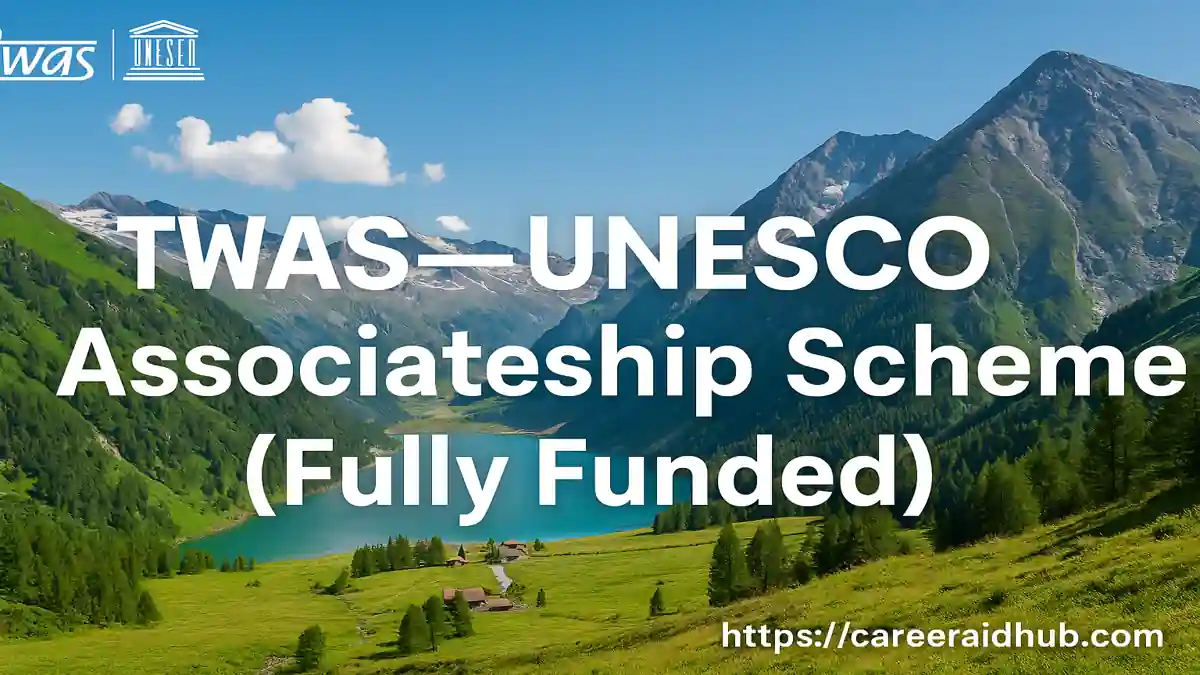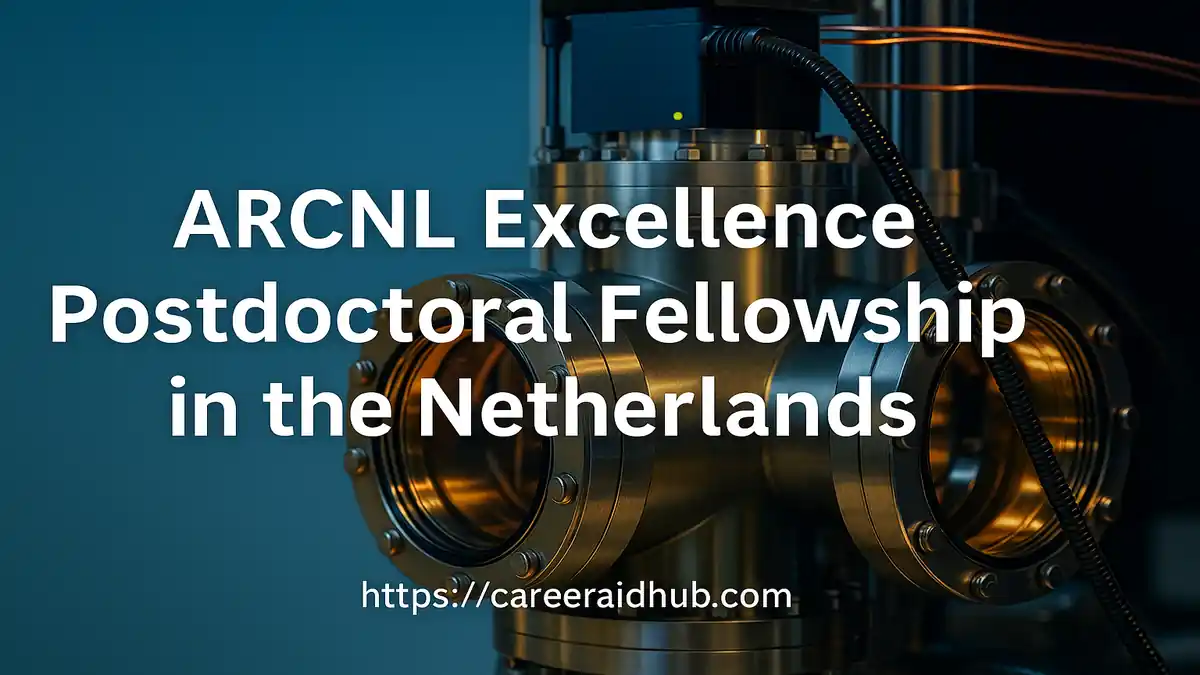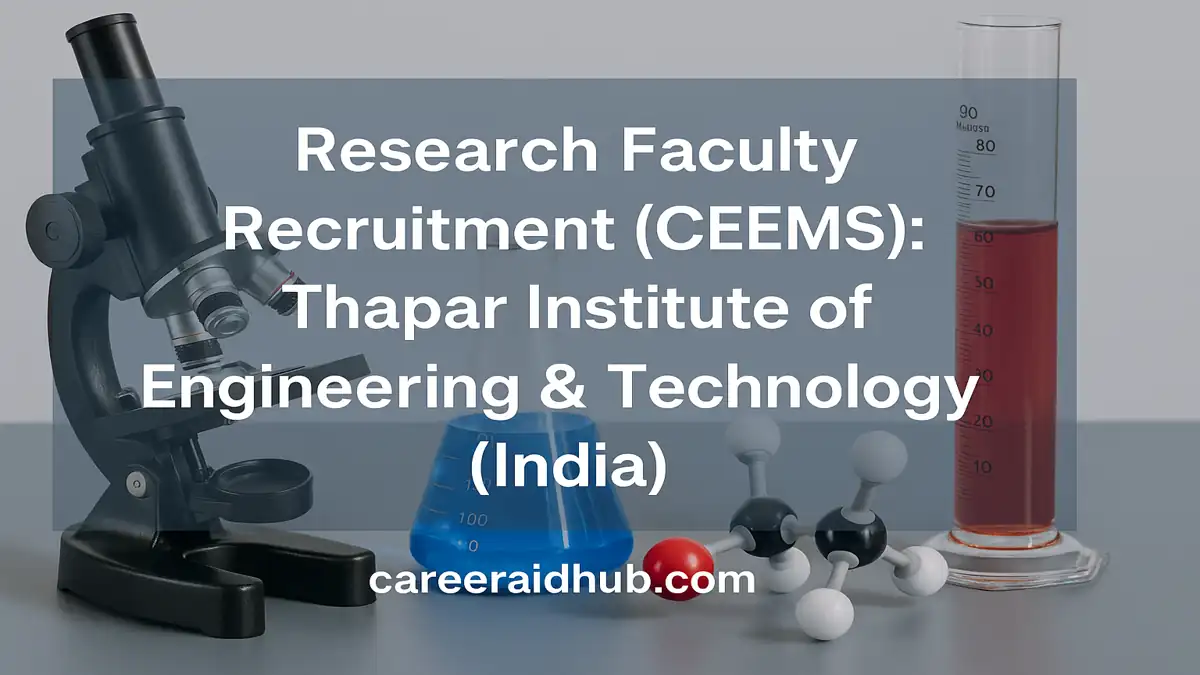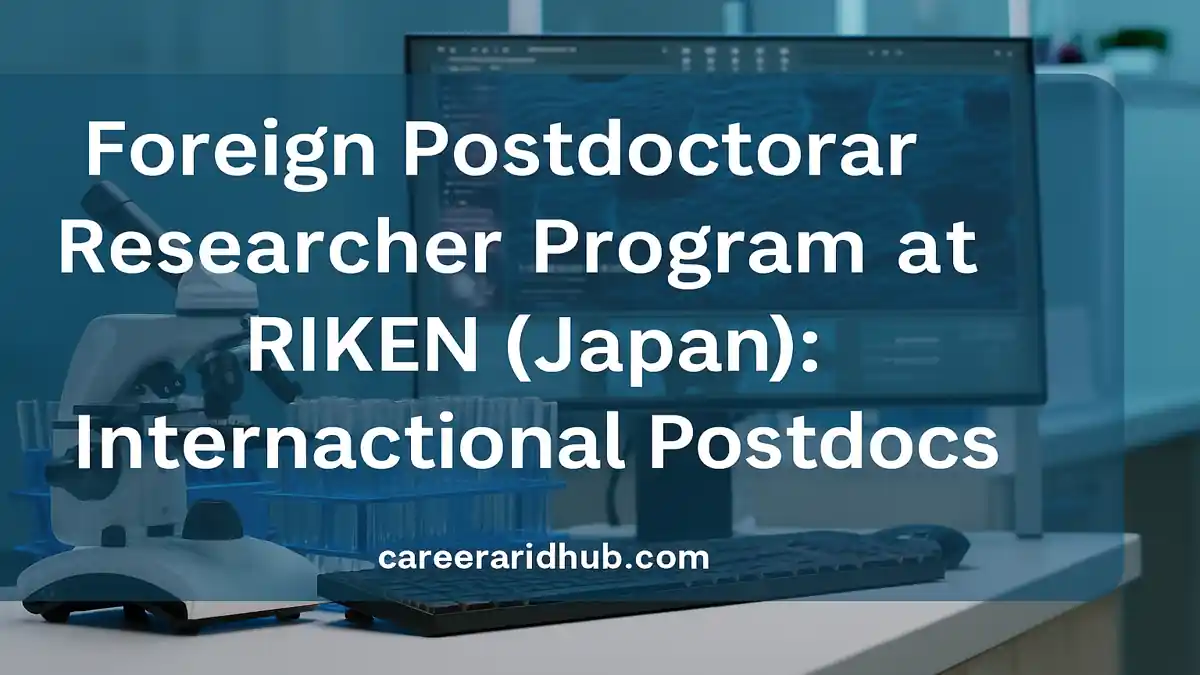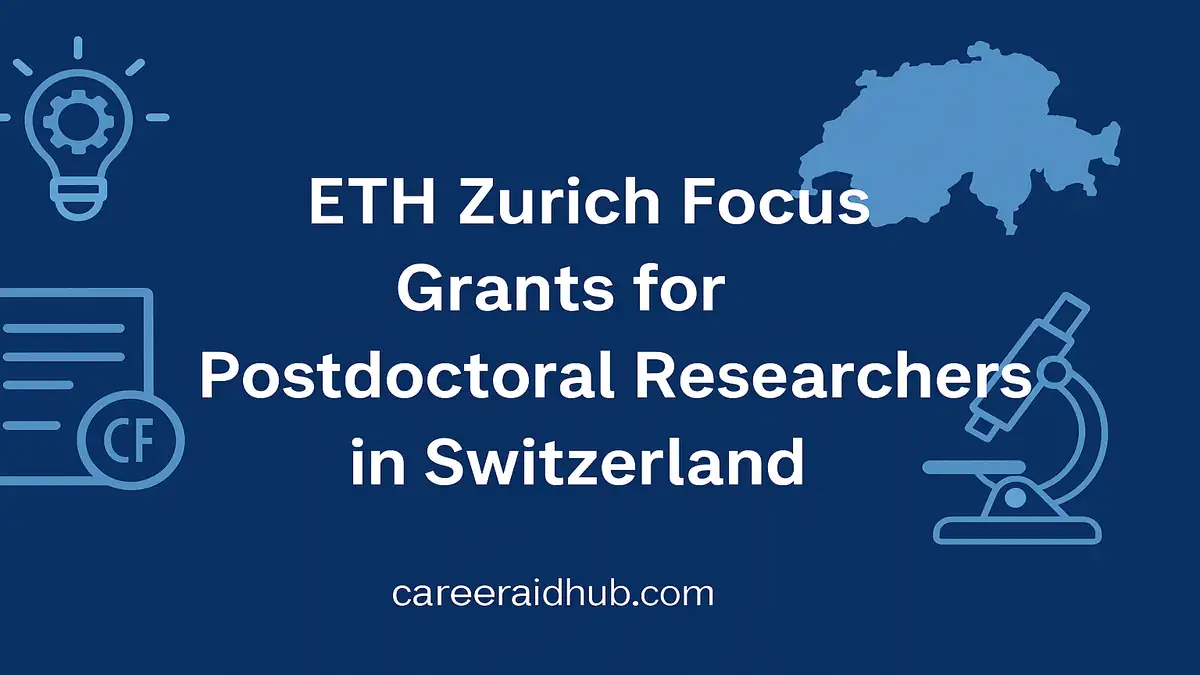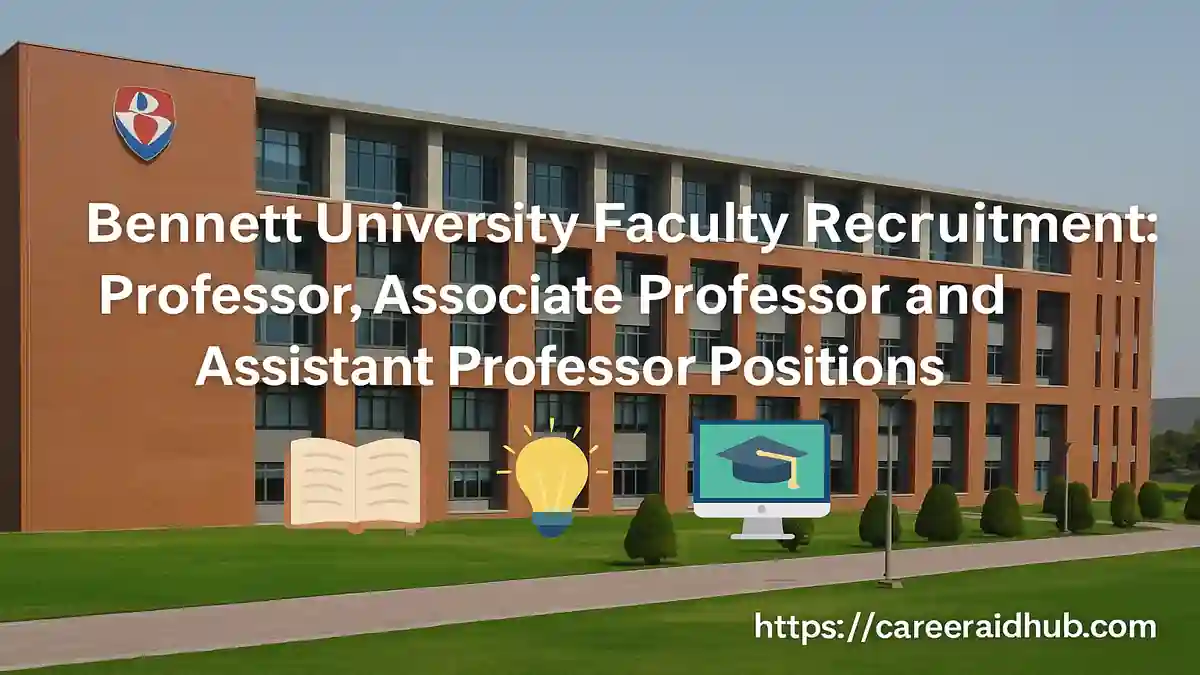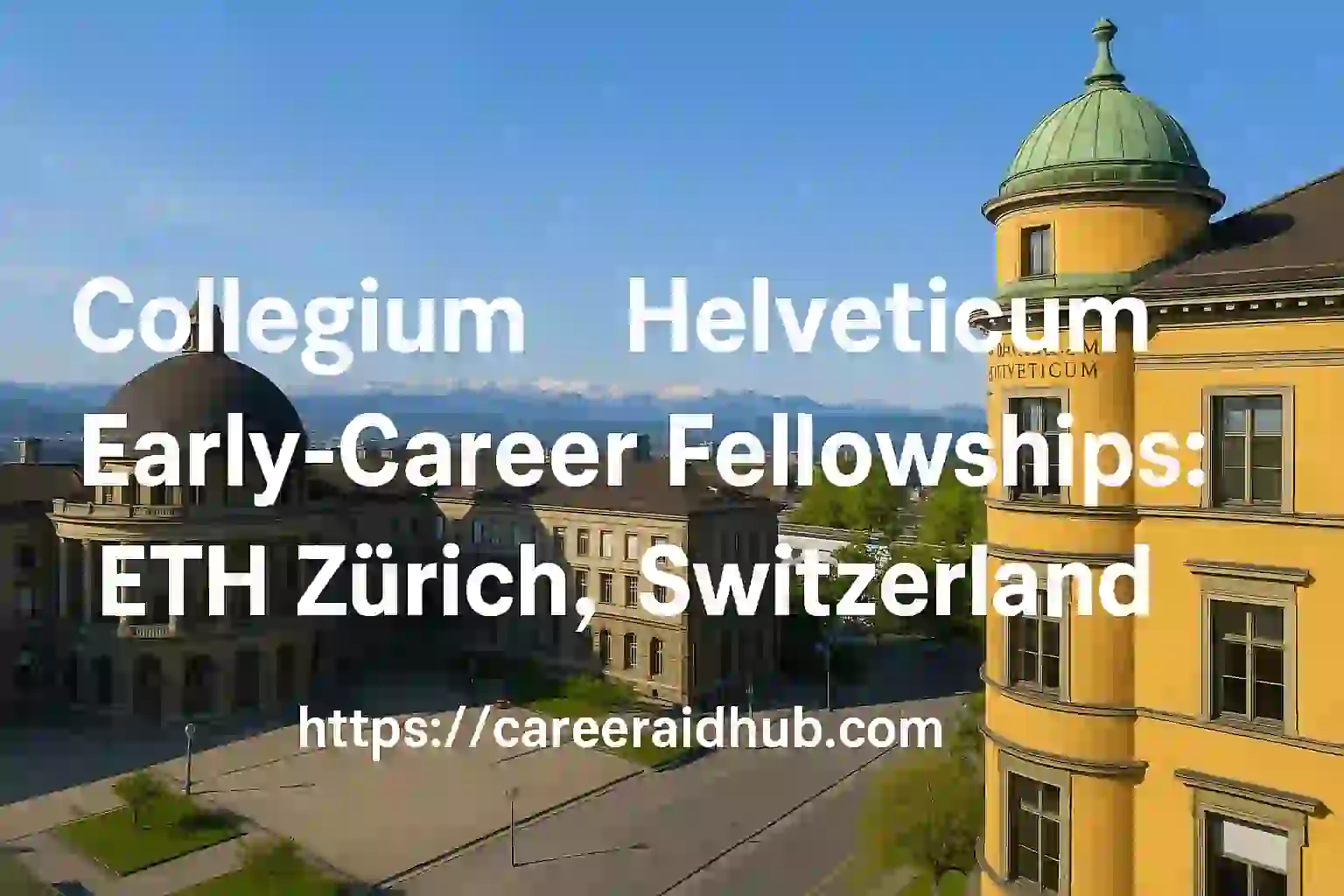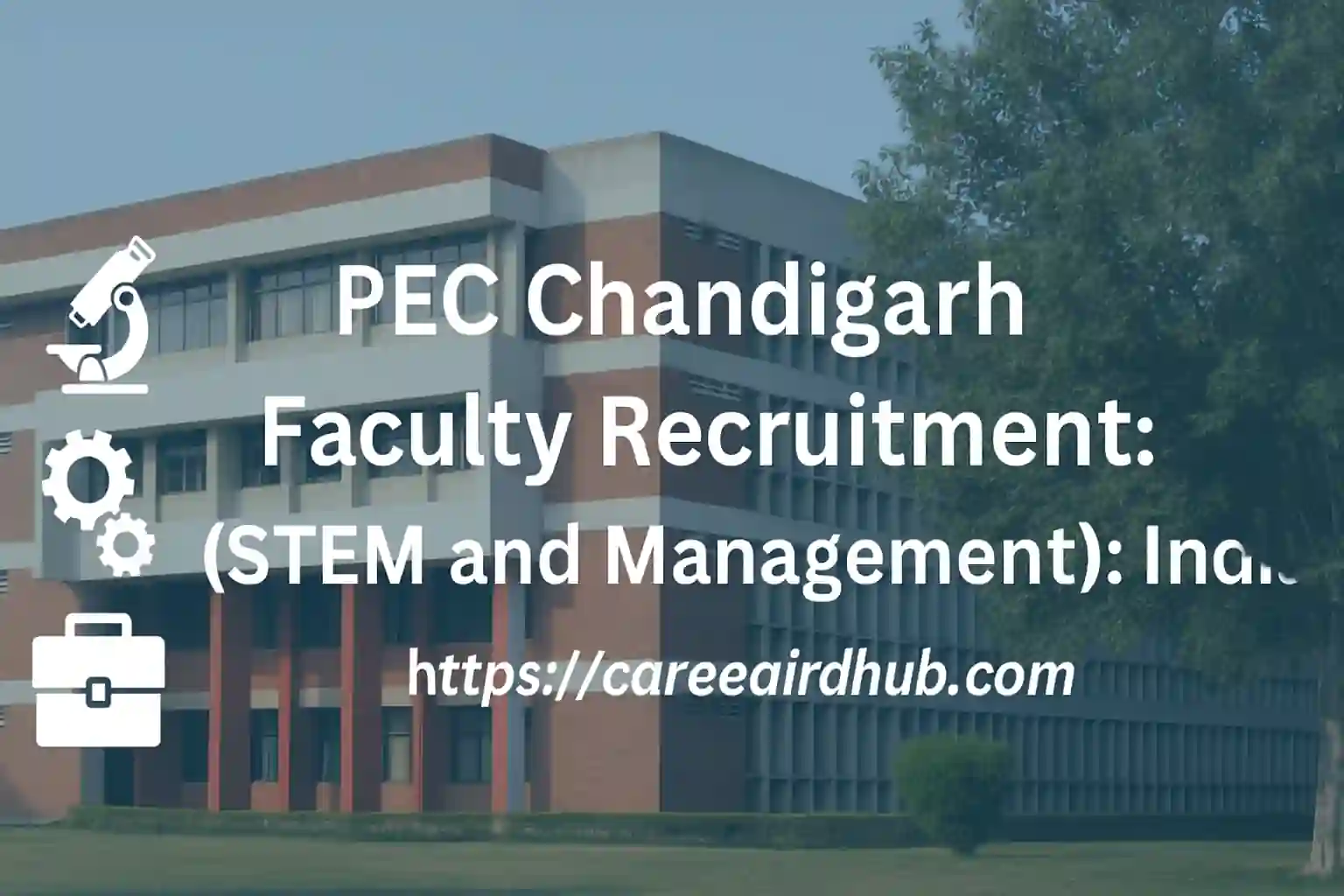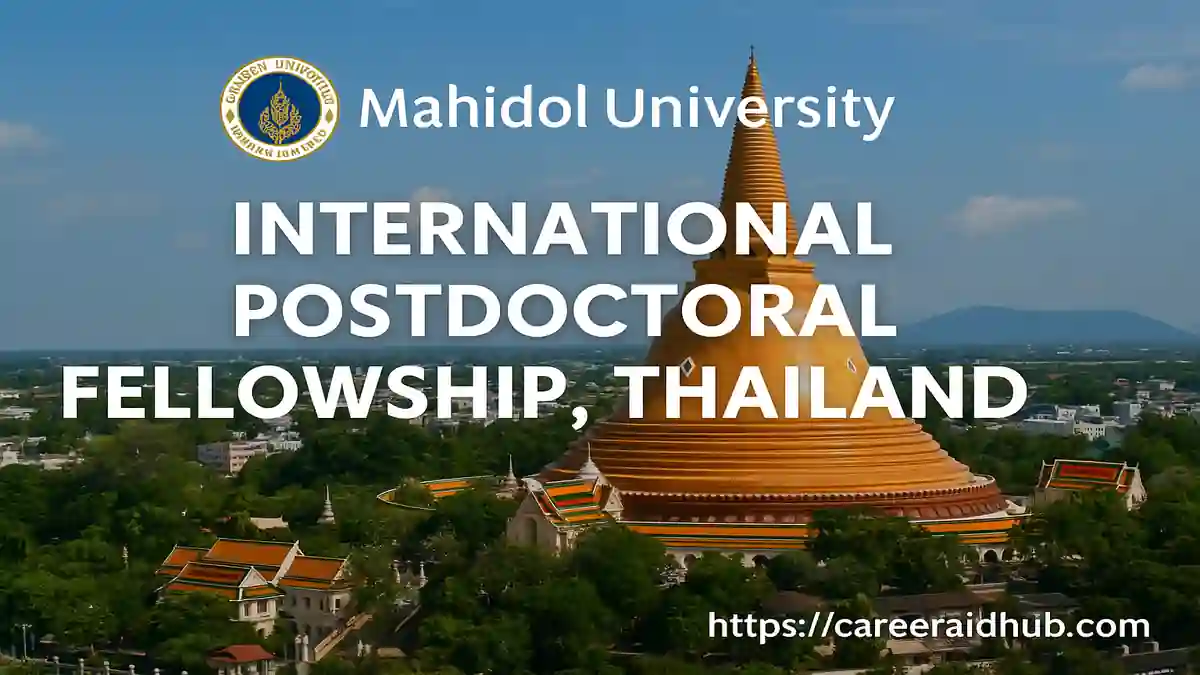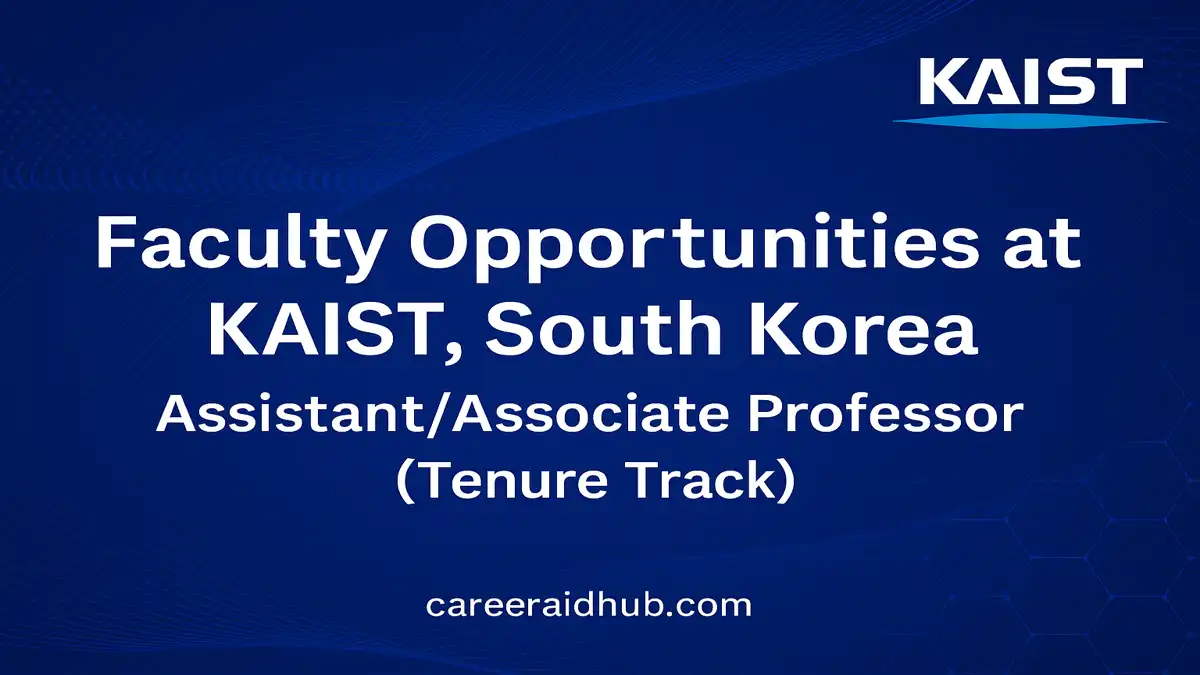Introduction
The TWAS-UNESCO Associateship Scheme enables accomplished researchers from the Global South to undertake regular, collaborative research visits at nearly 300 centres of excellence across developing countries. Each associateship spans three years, during which the associate may visit the host centre twice, typically for 2–3 months per visit. The programme covers international travel and provides a monthly subsistence contribution (up to USD 300); meanwhile, accommodation, meals, and research facilities are provided by the host centre. Applications are submitted online directly to TWAS.
The TWAS-UNESCO Associateship Scheme funds sustained South–South research collaboration through repeat visits to leading laboratories. Over a three-year term, selected scientists conduct focused projects, access advanced facilities, and build capacity at home institutions. This comprehensive, ad-free guide explains benefits, eligibility, documents, timelines, and proven strategies to submit a competitive application.
At a Glance: Why This Programme Stands Out
-
- Purpose: Strengthen South–South research partnerships and reduce brain drain by bringing resources to where talent already works.
- Model: A three-year appointment that guarantees repeat access to an agreed host laboratory, enabling momentum and measurable outputs.
- Scale: Close to 300 participating centres distributed across the South, offering diverse equipment, datasets, and field sites.
Who benefits most? Researchers with a defined project who require periodic access to specialized instrumentation, domain expertise, or field environments unavailable at their home institution. Because visits recur, you can design a staged plan—method training first, data collection later, synthesis and writing last.
Eligibility & Ideal Profile
-
- Minimum degree: PhD (or equivalent) in a field of the natural sciences.
- Citizenship/affiliation: You must be from a developing country in the South and typically employed at an eligible institution there.
- Competitiveness: Selection is merit-based; women scientists and applicants from isolated institutions receive special consideration.
- Age limit: None; demonstrated impact and a feasible plan weigh more than chronology.
Fit check. If your group needs instrument time, advanced methods training, or access to specialized field sites—and you intend to return and train colleagues—this scheme aligns closely with your goals. Additionally, candidates who build classroom or lab capacity after each visit tend to show strong programme fit.
Funding & What “Fully Funded” Really Means
-
- International travel: TWAS funds round-trip airfare for each approved visit.
- Subsistence: Up to USD 300 per month is provided by TWAS for incidental local costs.
- On-site support: The host centre covers accommodation and meals and ensures access to research facilities, supervision, and safety induction.
Because the host underwrites core living costs, your out-of-pocket expenses remain modest. Even so, set aside a
Duration, Visits, and Renewal
-
- Associateship term: 3 years.
- Visit pattern: Two visits of 2–3 months each during the term (timing agreed mutually with the host).
- Possible renewal: Subject to funds, TWAS may grant one additional three-year term.
This cadence supports real research progress. First visits often establish protocols and pilot data; second visits consolidate analyses, complete experiments, and finalize manuscripts, software, or datasets.
Fields & Host Centres
- Field focus: The natural sciences broadly—spanning physical, chemical, mathematical, life, earth, engineering, and computational sciences.
- Host network: TWAS maintains lists of participating institutes—including universities, national laboratories, and specialized centres—distributed across the Global South. Start with methodological fit, then confirm equipment availability, supervisory bandwidth, data governance, and field logistics.
Shortlist strategy. Identify 3–5 centres that converge on your methods (e.g., spectroscopy, advanced microscopy, numerical modeling, ecological surveys). Next, schedule a scoping call to verify feasibility, sample throughput, and co-authorship norms before requesting your letter of invitation.
Application Timeline & Key Milestones
-
- Online application: Submit through the TWAS portal and upload required documents(see checklist below).
- Typical deadline window: October–December for the following cycle; many calls close in December, so plan backward from that horizon to secure references and invitation letters on time.
- Online application: Submit through the TWAS portal and upload required documents
Next cycle (indicative). Based on recent patterns, expect October–December again—we will update soon. Consequently, finalize your technical plan and confirm host availability by late September for a stress-free submission.
Required Documents (Prepare These Early)
-
- Passport (bio page; in some cases, an expired passport is acceptable for application, per instructions).
- Head of Institution statement confirming your status, duties, and institutional support.
- Curriculum vitae (≤4 pages) plus a full publications list (separate annex).
- PhD certificate (official copy).
- Two recommendation letters, including at least one from an expert in another country.
- Invitation letter on host letterhead specifying two proposed visits (2–3 months each) and outlining planned collaboration, facilities, and supervision.
Document hygiene. Use consistent filenames, paginate multi-document PDFs, and include a one-page evidence index mapping claims—protocols, datasets, code, awards—to specific pages. This small step improves review efficiency.
How to Choose (and Convince) a Host
Step 1: Map Methods and Milestones
Draft a 2–3
Step 2: De-risk the Plan
Address data governance, lab safety/ethics approvals (IRB or biosafety if relevant), and a realistic Gantt-style timeline. Since visits are short, clarify throughput (e.g., samples/day, runs/week) and fallback options if a key instrument goes offline.
Step 3: Show Mutual Benefit
Offer co-advised student projects, a mini-workshop for the host group, or a methods wiki entry documenting protocols. Tangible reciprocity often accelerates invitation letters and strengthens post-award collaboration.
Review Criteria: What Selectors Typically Look For
-
- Scientific merit and feasibility of the proposed work given time constraints.
- Capacity building: clear transfer of skills and benefits for the home institution.
- Track record: outputs aligned with the host’s focus—publications, datasets, software, or field results.
- Sustainability: a realistic plan to maintain collaboration beyond the associateship.
Pro tip. Include a one-page outputs table (target venues, authorship plan, submission dates). Reviewers appreciate clarity, and hosts value transparent credit-sharing.
Actionable Application Checklist
-
- Shortlist hosts from the official lists; pre-discuss feasibility, equipment, and dates.
- Draft a joint plan detailing methods, facilities, and tangible deliverables.
- Secure the invitation letter on letterhead with two visit windows and named supervisors.
- Collect references early; brief referees with your summary and timeline.
- Upload all documents to the TWAS online form and submit before the deadline.
- Plan logistics (visas, vaccinations, housing details) immediately after submission so you can move fast if selected.
After the Award: Maximizing Impact
-
- Front-load training: Book instrument time in week one; complete safety inductions day one.
- Document protocols: Version-control scripts and SOPs; deposit code and data where appropriate to ensure reproducibility.
- Agree authorship early: Record contribution expectations; update as tasks evolve.
- Leverage the return visit: Address bottlenecks identified in the first visit and schedule targeted analyses to close gaps.
Feature Table
|
Feature |
Details |
|
Program Name |
TWAS-UNESCO Associateship Scheme |
|
Host Country |
Centres of excellence across developing countries (Global South) |
|
Funded By |
TWAS (under the auspices of UNESCO) with in-kind support from host centres |
|
Duration |
Three-year associateship; two visits, each 2–3 months |
|
Study Mode |
On-site, full-time research visits |
|
Eligibility |
Researchers from the Global South holding a PhD in the natural sciences |
|
Financial Support |
Round-trip airfare (TWAS) + up to USD 300/month subsistence; accommodation, meals, and lab access by host |
|
Fields of Study |
Natural sciences (broad STEM disciplines) |
|
Deadline |
Current call indicates a December deadline on the official site |
|
Official Website |
Next cycle planning. Historically October–December application windows; we will update soon when the confirmed timeline posts.
Conclusion
The TWAS-UNESCO Associateship Scheme remains a uniquely practical mechanism for scientists in the Global South: it funds repeat, purposeful access to advanced laboratories while anchoring capacity building at home institutions. If your research would benefit from specialized instruments, field sites, or co-supervision, assemble a feasible two-visit plan, secure an invitation, and submit via the official portal.
Frequently Asked Questions (FAQs)
It funds two short research visits over three years at approved Southern centres, covering airfare, subsistence, and host-provided accommodation, facilities, and supervision.
Applicants must hold a PhD in natural sciences, work in a developing-country institution, and present a feasible, capacity-building research plan with a willing host.
You undertake two visits of roughly two to three months each during a three-year term, coordinated with your host centre’s schedules and resources.
TWAS pays international airfare and a monthly subsistence contribution, while the host centre provides accommodation, meals, facilities access, and local research support.
Eligible disciplines span the natural sciences, including physical, chemical, life, earth, mathematical, engineering, and computational sciences aligned to host centre capabilities.
First shortlist centres matching your methods; then discuss instrumentation, data access, supervision capacity, timelines, and deliverables before requesting an invitation letter.
You typically submit passport, CV, publications list, PhD certificate, two recommendation letters, a head-of-institution statement, and a host invitation detailing two visit windows.
Plan early. Historically, applications open around October and close by December; prepare materials beforehand. We will update soon with the confirmed window.
Yes, subject to available funds and progress. You may receive one additional three-year term if outcomes and collaboration justify renewal.
It is highly competitive. Therefore, present a clear methods plan, realistic outputs, strong references, and explicit capacity-building benefits for your home institution.
Premium Mentorship for a Stronger Application
- Premium Mentorship: personalised 1:1 guidance for this and similar opportunities
- In-depth review of your CV, academic profile, and key statements
- Aligned with international selection criteria so your profile matches what panels expect
- Stronger, more compelling narrative for highly competitive calls
- Step-by-step support from opportunity mapping to final submission (fee-based)

